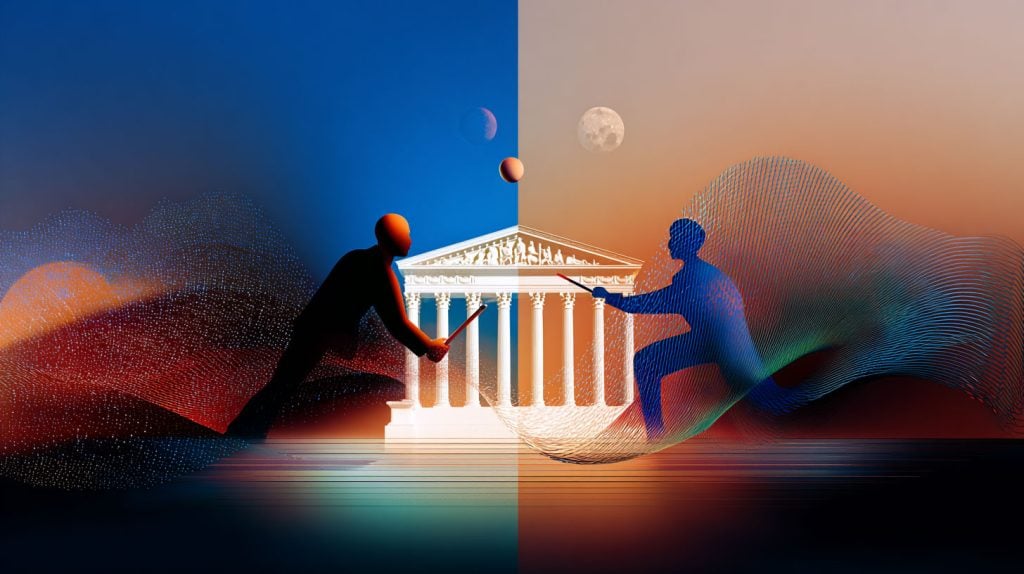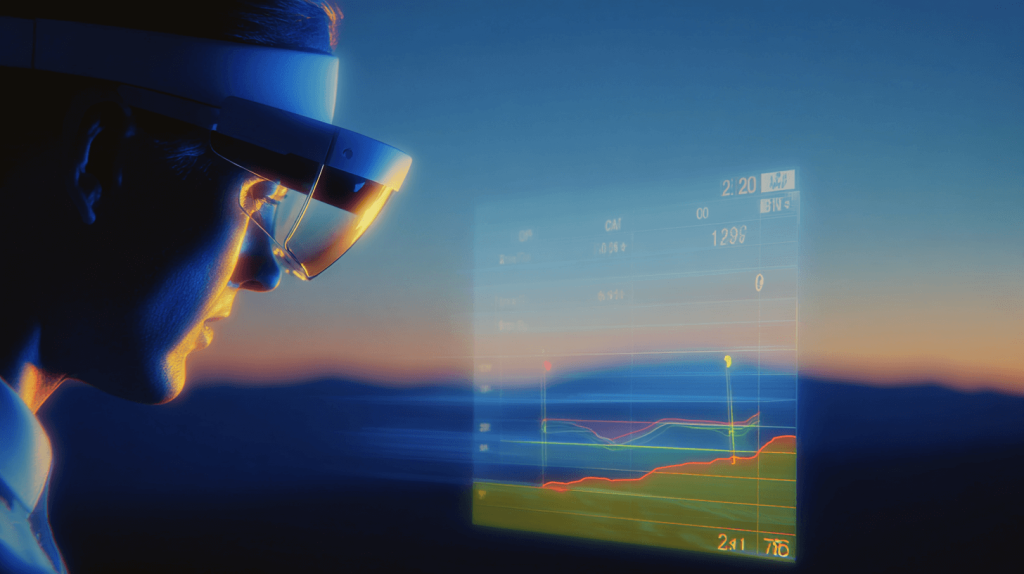Most innovators make a critical mistake when protecting their creations: they assume copyright and patent protection are interchangeable, or worse, they pick the wrong one entirely. This single decision has cost companies billions in lost market share and handed competitive advantages directly to rivals.
Consider Samsung’s $399 million lesson. When they independently developed multi-touch technology using completely original code, Apple couldn’t touch them under copyright law. But Apple’s patents on the underlying touch gestures? That resulted in a massive judgment and forced Samsung to redesign their entire interface approach.
The problem isn’t that inventors lack creativity—it’s that they misunderstand which type of intellectual property protection actually protects what matters. Copyright seems appealing because it’s automatic and free, but it only shields the surface-level expression of ideas. Patents cost more upfront but protect the profitable core concepts that competitors actually want to use.
Here’s what most innovators get wrong: they think copyright and patents are just different legal flavors of the same protection. In reality, they operate on completely different principles and protect entirely different aspects of innovation. Understanding this difference—and choosing correctly—often determines whether you’ll profit from your creation or watch others capitalize on your breakthrough.
The Strategic Overview: Copyright vs Patent at a Glance
Before diving deep, here’s how these protections fundamentally differ in practice:
| Aspect | Copyright | Patent |
| Protection Type | Creative expressions and artistic works | New inventions and technological processes |
| Application Process | Automatic upon creation | Formal USPTO examination required |
| Duration | Author’s life plus 70 years | 20 years from filing date |
| Cost | $0 (automatic) or under $100 for registration | $8,000-$20,000+ in legal and filing fees |
| Requirements | Originality and fixation in a tangible medium | Novelty, non-obviousness, and utility |
| Market Impact | Prevents copying of specific expressions | Blocks all use of invention – even independent creation |
| Competitive Impact | Limited – competitors can design around | Broader protection – controls functional concepts |
| Enforcement Power | Must prove copying occurred | Protects against independent development |
| Business Value | Protects creative expression | Protects underlying innovations and methods |
| Examples | Books, software code, music, photographs | Machines, algorithms, chemical compositions, business methods |
The Bottom Line: Copyright provides automatic protection against copying, while patents offer stronger market protection. Copyright protects the expression of ideas, but patents protect the functional concepts themselves – the innovations that drive competitive advantage. When protecting valuable innovations, patents provide broader exclusion rights that prevent competitors from using your invention, even if they develop it independently. The primary difference between a copyright and a patent is that a copyright safeguards original creative works, whereas a patent protects new inventions and technological solutions. Patents differ from other forms of intellectual property, such as copyrights and trademarks, in that they focus on protecting inventions rather than creative expressions or brand identity.
Understanding Patents: Your Innovation Monopoly
Patents represent the most powerful form of intellectual property protection available. In the United States, a United States patent is granted and regulated by the United States Patent and Trademark Office (USPTO), providing inventors with exclusive rights to their inventions. Patent law serves as the legal framework that governs the protection of inventions, encourages innovation, and outlines the processes for obtaining and enforcing patents. When intellectual property-intensive industries account for 41% of U.S. GDP (over $7.8 trillion), understanding patent strategy becomes crucial for serious innovators.
What Patents Actually Protect
A patent grants you exclusive rights to prevent anyone from making, using, selling, or importing your invention—even if they independently develop the same solution. A patent protects your invention by providing legal means to stop others from exploiting it without your permission. Patents protect inventions by safeguarding technological solutions and industrial applications. This “absolute monopoly” distinguishes patents from all other IP protections. The protection provided by a patent ensures that the exclusive right is granted to the patent holder, allowing them to control the use of their invention for a limited period.
The Three Critical Patent Requirements:
- Novelty: Your invention must be a completely new invention that is entirely new worldwide. If anyone has published, patented, or publicly used the same invention before your filing date, you’re disqualified.
- Non-obviousness: The invention must be non-obvious and represent a significant advance that wouldn’t be obvious to someone skilled in that field. This is often the most challenging requirement.
- Utility: The invention must cover new and useful processes and have a useful, practical purpose. This requirement is typically straightforward—virtually any real-world application satisfies it.
A patent is only granted if all these requirements are met.
Why Patents Command Premium Value
While copyright prevents copying, patents control market participation. Here’s why patents command premium valuations and drive real business value:
Startup Success Multiplier:
- Companies with patents are 2x more likely to go public and experience significant increases in sales and employment growth
- Patent portfolios often represent 30-80% of company valuations in tech and biotech
- Investors pay premium multiples for patent-protected innovations
Revenue Generation Power:
- Patent licensing creates ongoing royalty streams that copyright rarely achieves
- Qualcomm generates $7+ billion annually from patent licensing alone
- IBM earns $1+ billion yearly from its patent portfolio
Market Control Examples:
- Pharmaceutical patents: Enable premium pricing for 12-17 years, justifying $1-2 billion R&D investments
- Tech patents: Apple’s multi-touch patents forced competitors to completely redesign interfaces
- Process patents: Can control entire manufacturing methods across industries
The Patent Process: What to Expect
Timeline and Costs:
- Average processing time: The average processing time is 25.6–32 months from filing to grant.
- Typical costs: $8,000-$15,000 for standard applications, $20,000+ for complex inventions.
- Success rate: 36.1% of applications are approved after the first office action, while a significant portion require multiple responses.
The Four-Stage Process:
- Preparation and Filing ($8,000-$15,000 for non-provisional applications and $4,000-$7,000 for provisional applications.)
- Begin by preparing a patent application, which is a formal document submitted to the USPTO to seek patent protection.
- Draft a detailed application with claims defining your invention’s scope.
- Submit drawings, descriptions, and prior art analysis.
- Pay USPTO filing fees.
- Examination Phase (18-36 months)
- A patent examiner reviews against existing prior art.
- Respond to office actions (typically 2-4 rounds).
- Each response incurs attorney fees ranging from $2,000 to $5,000.
- Approval and Grant
- Pay issue fee (The issue fee upon approval ranges from $300 (micro entity) to $1,200 (standard entity).
- Receive a patent certificate.
- Maintenance (20-year term)
- Pay maintenance fees at 3.5, 7.5, and 11.5 years.
- Total maintenance costs: Between $2,692 (micro entity) and $13,460 (large entity) over the life of the patent.
Types of Patents and Strategic Applications
There are three main types of patents, each with specific legal requirements for eligibility and protection. It is essential to understand these legal requirements before applying for a patent.
Utility Patents (20-year term) – Cover new processes, machines, compositions of matter, or improvements. These represent 90% of all patents and include software algorithms, business methods, and manufacturing processes. Utility patents can protect the functional aspects of inventions, such as how a software or device operates, which are not covered by other forms of intellectual property.
Design Patents (15-year term) – Protect ornamental designs and visual appearance. Apple’s design patents on the iPhone’s rounded corners famously resulted in a $399 million judgment against Samsung.
Plant Patents (20-year term) – Cover new plant varieties reproduced asexually. It is less common but valuable in horticulture and agriculture.
Real-World Patent Success Stories
Case Study: Pharmaceutical Patents – Drug development costs an average of $1-2 billion and takes 10+ years. Patents provide the exclusivity period necessary to recoup these massive investments. Upon Lipitor’s patent expiry, generic versions quickly captured a significant share of the market.
Case Study: Apple’s Multi-Touch Technology – Apple’s patent on multi-touch gestures (US Patent 7,479,949) prevented competitors from using similar functionality, giving the iPhone a significant market advantage during its critical early years.
Understanding Copyright: Automatic Creative Protection
Copyright law is the legal framework that automatically protects original works of authorship, such as books, music, and art. Copyright operates on a fundamentally different principle than patents—it’s automatic, global, and lasts for generations. The moment you create an original work and fix it in a tangible medium, such as a book, photograph, or digital file, you own exclusive rights to that expression.
Automatic Global Protection
Unlike patents, copyright does not require registration or government approval. Copyright protection is automatic and does not require registration; your work is protected as soon as it is created. Thanks to the Berne Convention, your creative work is automatically protected in more than 179 countries without any additional filing.
The Two Simple Requirements:
- Originality: You created it independently (even if similar works exist).
- Fixation: It’s captured in some tangible form (written, recorded, saved digitally).
What Copyright Covers
Protected Works Include:
- Literary works: Books, articles, blog posts, software source code, software programs.
- Musical works: Songs, compositions, lyrics.
- Visual works: Photographs, paintings, graphic designs, architectural drawings.
- Audiovisual works: Movies, TV shows, YouTube videos, video games, motion pictures.
- Sound recordings: Recorded performances (separate from underlying musical works).
- Computer programs are also protected by copyright.
Your Exclusive Rights:
- Reproduction: Control who can make copies.
- Distribution: Control sales, lending, or giveaways.
- Public performance/display: Control public showings (for applicable works).
- Derivative works: Controlled adaptations, translations, and sequels.
Copyright Registration: Optional but Powerful
While registration isn’t required for protection, it unlocks crucial enforcement benefits. Registering your work with the U.S. Copyright Office is the official process for securing these protections and is essential for differentiating copyright from other forms of intellectual property. Registration also provides critical legal benefits, such as enhanced protection rights and stronger legal standing in enforcement actions.
Legal Advantages of Registration:
- Lawsuit eligibility: Generally required to file federal infringement suits.
- Statutory damages: Up to $150,000 per willful infringement (without proving financial loss).
- Attorney’s fees: Recoverable in successful infringement cases.
- Public record: Official documentation of your ownership claim.
Registration Process:
- Cost: $45-$65 online.
- Timeline: A Few weeks for processing.
- Requirements: Submit a copy of your work and basic information.
Copyright Duration and Value
Copyright lasts for the author’s life plus 70 years, making it one of the longest-lasting forms of intellectual property protection. The duration of copyright protection depends on several factors, such as when and how the work was created or published. In some cases, copyright can last only a few years, while in others, it extends to the author’s life plus 70 years. For corporate works, protection extends 95 years from publication or 120 years from creation.
Economic Impact Example: Disney’s Mickey Mouse character, created in 1928, generated billions in revenue over nearly a century of copyright protection before entering the public domain in 2024.
Strategic Differences: When Each Protection Matters
The main differences between copyright and patent protection lie in the types of works they protect, the requirements for obtaining protection, and the duration of rights.
Understanding the practical differences between copyright and patent protection determines your strategic approach to IP management. Both copyright and patent provide legal protection, but they apply to different kinds of intellectual property and involve distinct legal procedures.
Patent’s Superior Protection vs. Copyright’s Limited Shield
The fundamental difference isn’t just legal—it’s strategic. Patents protect what competitors want to use; copyright protects what’s easy to design around.
Copyright’s “Thin” Protection: Copyright only prevents copying or substantial similarity. If someone independently creates an identical work without access to yours, there’s no infringement. This creates significant limitations:
- Competitors can reverse-engineer and rewrite your software with identical functionality
- Similar business methods can be independently developed without infringement
- Your competitive advantage may diminish as others build equivalent solutions
Patent’s “Broad” Protection: Patents prevent any use of the claimed invention, regardless of independent development. This creates stronger market exclusivity where it matters most:
- Samsung couldn’t use multi-touch gestures even with completely original development
- Generic drug manufacturers cannot produce patented compounds
- Competitors must license, design around, or avoid the patented technology entirely
Real-World Impact: When Samsung independently developed multi-touch technology, copyright couldn’t stop them from using similar code. But Apple’s patents resulted in a $399 million judgment and redesign of Samsung’s entire interface approach.
Functional vs. Expressive Elements
Copyright Protects Expression, Not Ideas:
- The specific words in a novel (protected).
- The general plot concept (not protected).
- Software source code (protected).
- Underlying algorithms (not protected by copyright).
Copyright grants intellectual property rights over the original expression of ideas, such as written text or source code, but not over the underlying concepts or methods.
Patents Protect Functional Concepts:
- The algorithm itself (patentable if novel).
- The method of operation (patentable).
- The technical solution (patentable).
Patents confer intellectual property rights on new and useful inventions, encompassing functional aspects such as algorithms and technical solutions.
Software Example: Google’s search engine demonstrates dual protection:
- Copyright: Protects the billions of lines of source code.
- Patents: Protect PageRank algorithm and other search technologies.
Even if competitors write entirely original code, they can’t use Google’s patented search methods without licensing.
When Copyright Fails and Patents Prevail
Copyright’s Significant Limitation: It only protects expression, not the underlying valuable concepts. This means:
In Software:
- Competitors can study your app, understand the innovative workflow, and rebuild identical functionality using different code
- Your months of UX innovation can become guidance for competitors
- Market advantage may be reduced as competitors create similar solutions
In Business Methods:
- Revolutionary business processes can be studied and adapted as long as competitors don’t use your exact documentation
- Franchise models, operational innovations, and customer acquisition methods may remain less protected
Patent Protection Provides Broader Coverage:
- Business method patents can protect innovative processes, workflows, and systems
- Software patents protect algorithms, user interfaces, and technical solutions
- Process patents control manufacturing methods and operational innovations
The Key Difference: Copyright says “don’t copy my specific implementation.” Patents say “you cannot use this functional approach.”
Industry-Specific Protection Strategies
Different industries rely on varying combinations of IP protection based on their innovation models and competitive landscapes.
For example, trademark protection covers elements such as brand names and service marks, which help identify and distinguish the source of products and services. The law governing intellectual property provides the framework for protecting these rights and ensuring creators and businesses can secure their innovations.
Technology and Software
Multi-Layered Approach: Most successful tech companies use both protections strategically:
- Copyright for code: Prevents direct copying of software implementations.
- Patents for functionality: Protects innovative features and algorithms.
- Trade secrets: For proprietary processes not suitable for patenting.
Research Finding: Startups with patents double their chances of going public and experience significant increases in sales and employment growth, demonstrating the crucial role of patents in tech valuation.
Pharmaceutical and Biotechnology
Patent-Centric Strategy: With drug development costs exceeding $1 billion, patents provide essential exclusivity:
- Composition patents: Protect drug compounds.
- Method patents: Protect uses and dosing regimens.
- Process patents: Protect manufacturing methods.
The Patent Advantage: Drug development costs average $1-2 billion and takes 10+ years. Without patent protection, this investment is extremely challenging because:
- Generic manufacturers can reverse-engineer compounds in 6-12 months
- Upon patent expiry, generics capture 80-90% market share within 2 years
- Patent exclusivity enables the premium pricing necessary for R&D recovery
Copyright Cannot Protect: While pharmaceutical companies may copyright their research papers, this provides no protection against competitors producing identical drug compounds. Only patents control the profitable core innovation.
Timeline Considerations: The 20-year patent term begins with filing, but FDA approval can take 10 years or more, effectively reducing market exclusivity to 8-12 years for many drugs.
Creative Industries
Copyright-Dominant Approach: Entertainment, publishing, and creative industries rely primarily on copyright:
- Automatic protection: No registration delays or costs.
- Long duration: Protects revenue streams across generations.
- Global coverage: Simplified international protection.
Revenue Models:
- Licensing to multiple platforms.
- Derivative works (sequels, adaptations).
- Merchandising and character licensing.
Step-by-Step Decision Framework
Follow this systematic approach to determine the optimal IP strategy for your creation:
Phase 1: Classification Assessment
Ask These Key Questions:
- Is your creation primarily functional or expressive?
- Functional → Consider patents
- Expressive → Copyright applies automatically
- Does it solve a technical problem?
- Yes → Patent potential
- No → Copyright likely sufficient
- Would others benefit from using the same method?
- Yes → Patent provides market exclusion
- No → Copyright may be adequate
Phase 2: Patent Viability Analysis
Conduct a preliminary novelty search:
- Search existing patents in your field.
- Review published academic literature.
- Analyze competing products or services.
- Identify potential prior art conflicts.
Evaluate the three requirements:
- Novelty: Is it truly new worldwide?
- Non-obviousness: Would experts consider it surprising?
- Utility: Does it solve a practical problem?
Phase 3: Strategic Value Assessment
Economic Analysis:
- Market size and competitive landscape.
- Revenue potential over the protection period.
- Cost of obtaining and maintaining protection.
- Likelihood of competitive copying.
Timeline Considerations:
- How quickly is your industry evolving?
- Will the innovation remain valuable for 20 years?
- Do you need immediate protection, or can you wait 2-3 years?
Enforcement Practicality:
- Can you detect infringement easily?
- Do you have resources for potential litigation?
- Are there licensing opportunities?
Phase 4: Implementation Strategy
For Copyright:
- Ensure proper fixation (save, record, document).
- Consider registration for valuable commercial works.
- Implement appropriate copyright notices.
- Establish creation and publication dates.
For Patents:
- Maintain strict confidentiality before filing.
- Document the invention process thoroughly.
- Consider provisional applications for early filing dates.
- Work with qualified patent attorneys.
- Develop an international filing strategy if needed.
For Dual Protection:
- Identify copyrightable elements (code, documentation, designs).
- Separate patentable functionality.
- Coordinate filing strategies.
- Ensure consistent ownership documentation.
Global Considerations and Best Practices
International Copyright Strategy
Copyright’s automatic global protection simplifies international strategies, but enforcement varies by jurisdiction:
Key Considerations:
- Registration benefits: Some countries offer additional benefits for registered works.
- Moral rights: European countries provide additional author protections.
- Fair use variations: Different countries have varying fair use and fair dealing provisions.
International Patent Strategy
Patents require separate protection in each country, making an international strategy complex and expensive:
Cost-Effective Approaches:
- PCT Filing: File an international application covering 150+ countries.
- Strategic Market Selection: Focus on key commercial markets.
- Regional Systems: Use the European Patent Office for EU coverage.
Budget Considerations:
- Filing in 5-10 major markets: $50,000-$100,000+.
- Annual maintenance fees multiply across jurisdictions.
- Translation and local attorney costs add significantly.
Enforcement Best Practices
Copyright Enforcement:
- DMCA takedowns: Efficient for online infringement.
- Cease and desist letters: Cost-effective initial approach.
- Federal litigation: For significant commercial infringement.
Patent Enforcement:
- Patent monitoring: Regular searches for potential infringement.
- Licensing programs: Monetize patents through royalties.
- Litigation strategy: Consider costs vs. potential damages.
Advanced Strategic Considerations
Trade Secrets as an Alternative
Sometimes, keeping innovations secret provides better protection than patents:
Trade Secret Advantages:
- There is no disclosure requirement.
- Unlimited duration if secrecy is maintained.
- No government filing or examination.
Trade Secret Disadvantages:
- There is no protection against independent development.
- Risk of reverse engineering.
- Difficult to enforce.
Famous Examples:
- Coca-Cola formula (kept secret for over 130 years).
- Google’s search algorithm details.
- Manufacturing processes with reverse-engineering difficulty.
Portfolio Development
Successful companies develop comprehensive IP portfolios combining multiple protection types:
Strategic Portfolio Elements:
- Core patents: Protect fundamental innovations.
- Defensive patents: Block competitors’ design-around efforts.
- Copyright registrations: Secure valuable creative content.
- Trade secrets: Protect non-patentable competitive advantages.
- Trademarks: Protect brand elements and market identity.
Valuation and Monetization
IP Licensing Revenue Models:
- Upfront payments: Immediate revenue from licensing deals.
- Royalty streams: Ongoing percentage of sales.
- Cross-licensing: Trade IP rights with competitors.
- Acquisition premiums: Higher company valuations with strong IP.
Valuation Factors:
- Remaining protection term.
- Market size and competition.
- Enforceability strength.
- Commercial adoption rate.
Action Plan: Protecting Your Innovation Today
Immediate Steps (This Week)
- Document Everything: Create detailed documentation of your creative or inventive process.
- Implement Confidentiality: Use NDAs for any discussions with potential partners.
- Conduct Preliminary Searches: Research existing patents and copyrighted works in your field.
- Secure Digital Assets: Ensure proper backup and version control for creative works.
Short-Term Actions (Next 30 Days)
- Professional Consultation: Meet with qualified IP firm for strategy assessment.
- Prior Art Analysis: Conduct thorough searches for patent potential.
- Registration Planning: Identify works requiring copyright registration.
- Budget Planning: Estimate the costs associated with your chosen protection strategy.
Long-Term Strategy (Next 90 Days)
- File Applications: Submit patent applications or copyright registrations.
- Develop Monitoring Systems: Establish processes for detecting and addressing infringements.
- Create Licensing Framework: Develop standardized licensing terms.
- Build IP Portfolio: Plan additional innovations and protections.
Your Next Steps to IP Protection Success
The strategic decisions you make about intellectual property protection today determine whether you’ll profit from your innovations or watch competitors capitalize on your breakthroughs. Understanding the difference between copyright and patent protection gives you the foundation to build a defensible competitive advantage.
The Bottom Line: Weak IP strategies don’t just fail to protect—they actively help competitors by creating roadmaps to beat you faster and cheaper. Whether you need patent protection for your next breakthrough invention or trademark protection for your brand, success requires experienced legal counsel who engineers IP strategies that withstand scrutiny and deter competitors.
Time-Sensitive Reality: In our first-to-file system, competitors are already working on similar innovations. Every day without proper protection potentially hands your competitive advantage to rivals who understand the strategic value of strong intellectual property.
Your Immediate Action Steps:
- Schedule a Free IP Protection Strategy Call with our IP team – Get professional assessment of your IP protection needs and develop a strategic plan that maximizes your competitive advantage
- Conduct thorough prior art searches for any patentable innovations
- Document your creative processes and maintain detailed invention records
- Identify trademark opportunities for your brand elements and product names
- Consult with experienced IP attorneys who understand both the technical and business sides of intellectual property protection
Why Experience Matters: Patent and trademark applications involve complex legal requirements that DIY approaches and inexperienced attorneys often miss. Our team has guided countless innovators through successful IP strategies that deliver real business results.
The RLG Guarantee – Get Your Intellectual Property Protected or Pay Nothing:
For Patentability Searches: We’re so confident in our comprehensive prior art analysis that if our search finds your invention is not novel, we’ll issue a 100% refund. Get a professional patentability assessment with zero risk.
For Provisional Patent Applications: Our experienced US patent attorneys lead your provisional application from start to finish with one transparent flat-fee covering the entire process. Full refund if USPTO denies your provisional patent application.
For Trademark Applications: Get your trademark approved or pay nothing. We guarantee it. If your trademark gets rejected after our thorough registerability analysis, we’ll issue a 100% refund.
Ready to build your IP competitive advantage? Contact our experienced IP team to develop a customized protection strategy that turns your innovations into defended market positions. The investment you make in strategic IP protection today multiplies into sustainable competitive advantages that competitors cannot easily replicate.




